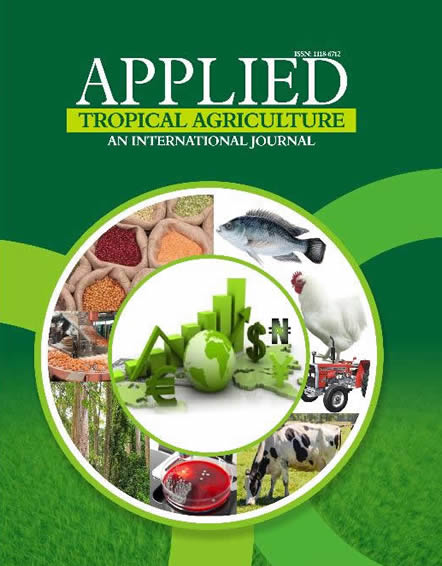months (March to September) 2015. At the time of this study a portion of the University forest was cut down and burnt. The
three study sites investigated were: Distance Learning Institute (DLI), High Rise Area and Lagoon Front Area. Data
collected from the study sites were subjected to diversity indices, descriptive statistics and diversity t-Test. A total of 787
individuals of Dragonflies and Damselflies from 13 genera, 3 families and 21 species were sampled. The three families
include Coenagrionidae (62%), Libellulidae (36%) and Platycnemididae (2%). The most dominant species was Ceriagrion
glabrum (42%) followed by Acisoma panoipoides (10%). The DLI study site had the richest odonate fauna (Shannon
Wiener index (H' = 1.94), Simpson’s Dominance index (C = 0.85); while the least was the High Rise study site (Shannon
Wiener index (H' = 1.91), Simpson’s Dominance index (C = 0.85). The distribution of the fauna was highest at DLI study
site (Evenness = 0.99), followed by Lagoon front (0.98) and High rise (0.97). Degree of concentration at different study
sites, was highest at DLI (0.85) and least at High rise (0.85). Most of the odonates sampled in this study are ubiquitous
damselflies. When compared with the study on odonates at same study sites a year before, It is obvious that the human
disturbance experienced at the study sites is detrimental to the assemblage of localized Odonata species of the forest.
Hence, there is a strong need to preserve the Odonata community of the University of Lagos.
PAPER TITLE :IMPACT OF HUMAN DISTURBANCE ON THE ABUNDANCE, DIVERSITY AND DISTRIBUTION OF ODONATA IN THE UNIVERSIT
APPLIED TROPICAL AGRICULTURE | VOLUME 21 NUMBER 3 2016
Paper Details
- Author(s) : Kemabonta, K.A.1*, Adu, B.W.2 and Ohadiwe, A.C.1
- Abstract:


